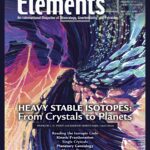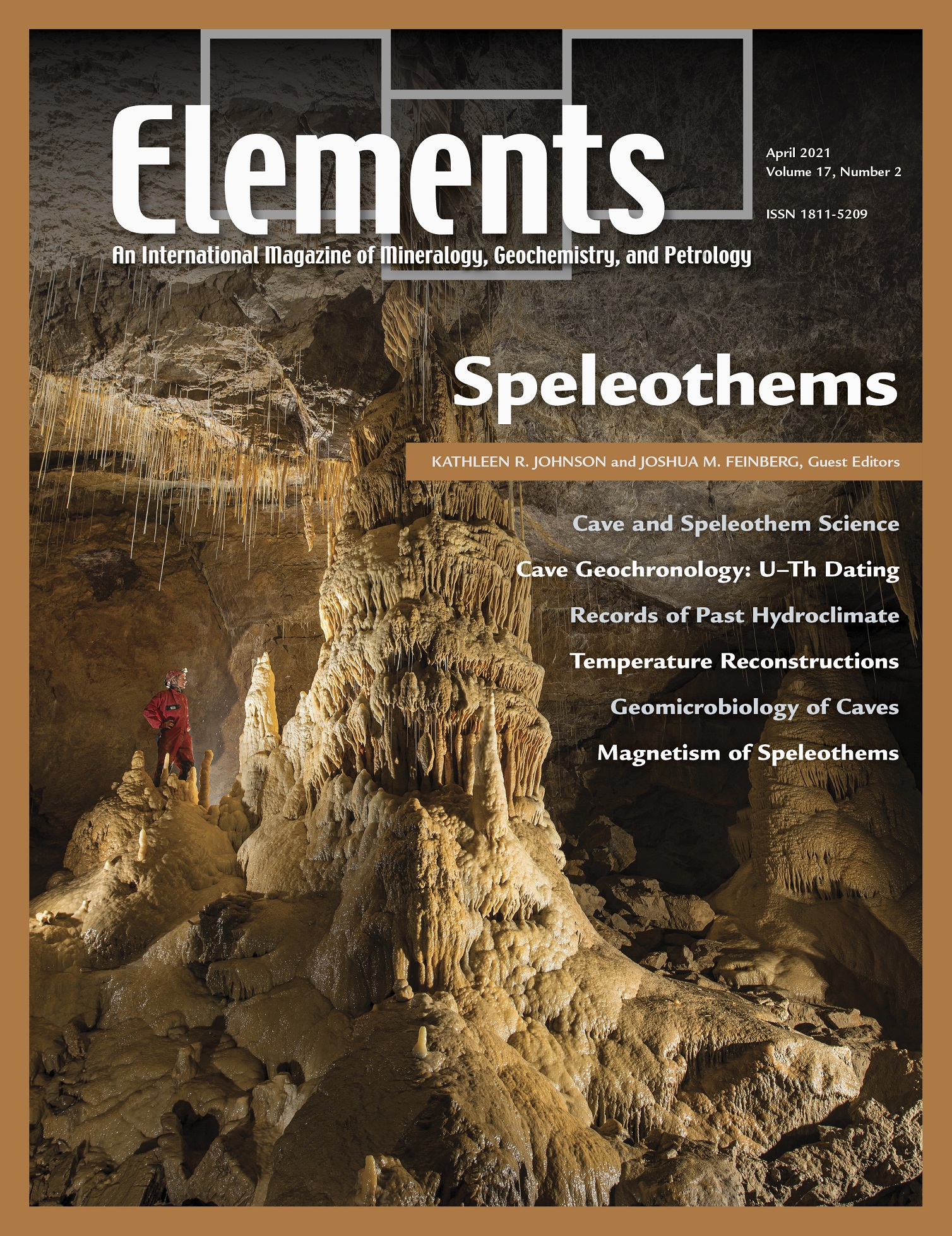
Hydrothermal Fluids, December 2020, Vol. 16, No. 6
June 28, 2024
Heavy Stable Isotopes: From Crystals To Planets, December 2021, Vol. 17, No. 6
June 28, 2024Speleothems, April 2021, Vol. 17, No. 2
$20.00
Growing slowly drip by drip through the millennia, stalagmites, stalactites, and flowstone—collectively known as speleothems—are some of the most fantastic mineral features in nature. Speleothems are also critical archives of past environments, and their study incorporates expertise from groundwater hydrogeology and geochemistry, atmospheric chemistry, climate science, geobiology, and even geophysics.
Speleothems
April 2021, Vol. 17, No. 2
Growing slowly drip by drip through the millennia, stalagmites, stalactites, and flowstone—collectively known as speleothems—are some of the most fantastic mineral features in nature. Speleothems are also critical archives of past environments, and their study incorporates expertise from groundwater hydrogeology and geochemistry, atmospheric chemistry, climate science, geobiology, and even geophysics. Research on speleothem trace element and isotopic geochemistry, constituent organic compounds, noncarbonate minerals, and morphology can help illuminate paleoenvironmental conditions and document historical anthropogenic land-use changes. This issue of Elements introduces the many ways that speleothems are used within the geoscience community to learn about natural Earth processes and our role in modifying them.
Why You’ll Love Elements Magazine:
- Expert Contributors: Articles written by renowned researchers in the field of geoscience.
- Engaging Content: Join a community of readers who are passionate about Elements.
- Exceptional Quality: Each issue is printed on high-quality paper with stunning visuals and detailed illustrations that bring complex scientific concepts to life.
Order your copy of the April 2021 issue of Elements magazine today and explore speleothems.
Related products
-
Water On Mars, June 2006, Vol. 2, No. 3
$20.00During the past several decades, spacecraft data have transformed the planets from astronomical objects into geologic worlds. Mars is the current focus of planetary exploration, and NASA’s objectives for this effort are based on the theme, “follow the water.
-
Carbon Dioxide Sequestration, October 2008, Vol. 4, No. 5
$20.00Storage of carbon in the subsurface involves introduction of supercritical CO2 into rock formations beneath the surface of the Earth, typically at depths of 1000 to 4000 meters. Although CO2 is a relatively benign substance, the volume being considered is large.
-
Deep Earth And Mineral Physics, June 2008, Vol. 4, No. 3
$20.00The field of high-pressure mineral physics is central to our understanding of the Earth’s interior and its evolution. It is also a field that is rapidly advancing.




